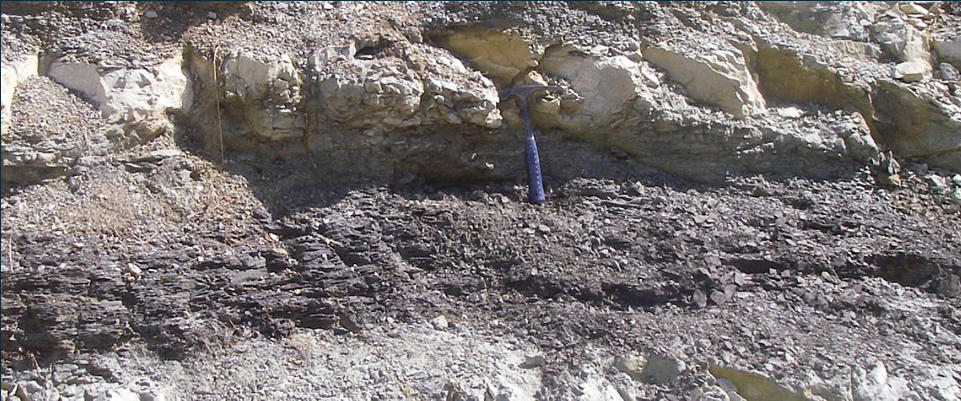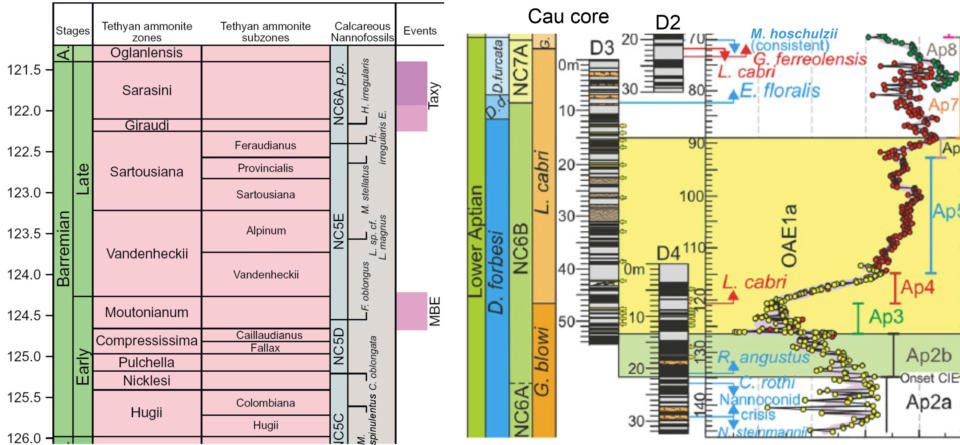Aims of the study
This project addresses the multidisciplinary study (biotic and geochemical markers) of the EECs comprised between the end of the early Barremian and part of the early Aptian (Early Cretaceous). This includes two of the EECs that have received the least attention so far: the Mid-Barremian Episode (MBE) and the Taxy Episode (TE). together with the initial stages of the widespread Early Aptian Oceanic Anoxic Event 1a (OAE 1a) Starting hypothesis
The starting hypothesis is that all these EECs could be related to each other, and be the response of the Earth System to climatic changes. These climatic changes could be related to pulses or increases in the amount of greenhouse gases in the atmosphere, which occurred during the Barremian – early Aptian interval, and culminated in the OAE 1a Episode PY20_00783 Project
I+D+i Project, funded by Plan Andaluz de Investigación, Desarrollo e Innovación (PAIDI 2020). Consejería de Transformación Económica, Industria, Conocimiento y Universidades. Junta de Andalucía.
Material
Several stratigraphic sections, deposited in pelagic / hemipelagic marine environments, were selected in the Betic Cordillera on the basis of their apparently continuous record throughout the study interval and the previous recognition of MBE, TE and OAE 1a Methodology
• Field sampling. • Biostratigraphic analysis using different fossil groups (ammonites, calcareous nanofossils, planktonic foraminifera). • Determination of carbonate content, stable C and O isotopes, total organic carbon (TOC), geochemistry of major and trace elements with environmental significance, and biomarker associations. • Quantitative analysis of calcareous nanofossil assemblages and determination of nutrient and temperature indices. Echo- stratigraphic analysis of the ammonite assemblages and planktonic foraminifera Episodes of accelerated environmental
change during the Barremian and basal
Aptian: preludes of the OAE 1a
The Jurassic and Cretaceous oceanic anoxic events (OAEs) represent episodes of global climate / environmental change characterized by the development of generalized anoxic / dysoxic conditions in marine environments and the deposition of organic matter in sediments. Their relationship with global disturbances in the carbon cycle has been established through several studies. Much less attention have received those episodes of accelerated environmental change (EECs), which involved disturbances of the carbon cycle that did not cause widespread anoxia / dysoxia in marine environments. This lack of attention is not, however, justified in its lack of importance, since they were characterized by environmental and climatic conditions of greenhouse effect that, apart from affecting the marine biota, were marked as disturbances of the carbon cycle and also left their own geochemical imprints on the sedimentary record
PY20_00783 Research Project


MBE in Bco. Azadillas

Integrated stratigraphy
Integrating biotic and geochemical data in La
Frontera Section

MBE, TE and OAE 1a

















